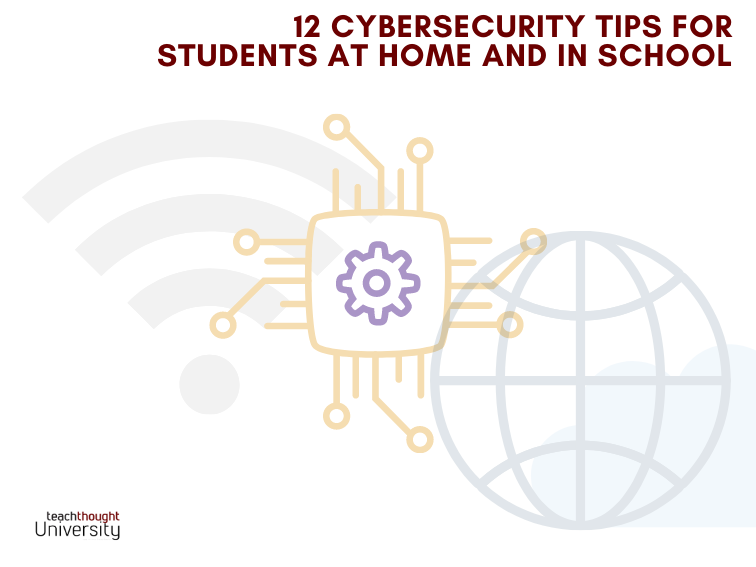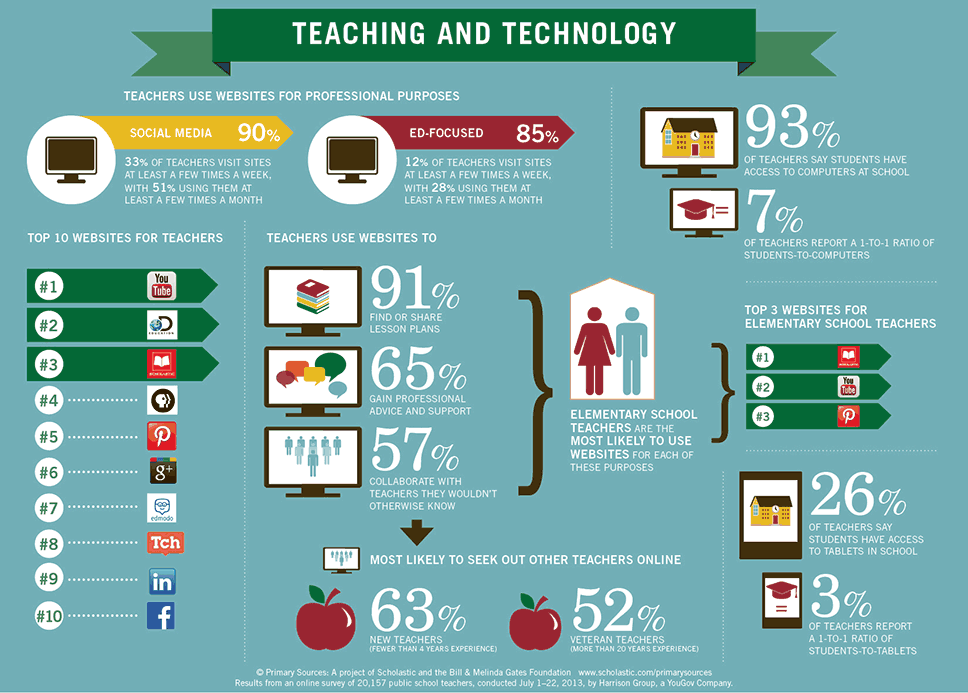Engage students in your classroom with our Top 10 favorite interactive educational technology resources. These websites will help you create new and captivating lesson plans for your curriculum using powerpoint, creative writing methods, and on-screen flashcards. Education; Top 5 Benefits of Technology in the Classroom; Resource Articles // Top 5 Benefits of Technology in the Classroom How you can make educational technology work for you. Technology has transformed life as we know it, and the classroom looks much different than it did 50—or even 10—years ago.
- Discover our latest educational technology and solutions that combine Samsung technology, easy-to-use device management tools and our partner ecosystem to deliver powerful digital learning experiences, inside and outside the classroom.
- The last few months have created opportunities for educators and developers of education technology to innovate. Students are learning to use digital tools to create things that would otherwise be done by hand, exploring the world virtually through maps and videos, and even inventing ways to stage group musical performances from a dozen tiny.
- Assistive technology tools are among the least ‘celebrated’ but most crucial tools in K-12 education today. According to the National Education Association (NEA), the number of U.S. Students enrolled in special education programs has risen 30 percent over the past 10 years.
The importance of audio visual (AV) technology in education should not be underestimated. There are two reasons for this; one, learning via AV creates a stimulating and interactive environment which is more conducive to learning; two, we live in an audio-visual age which means that having the skills to use AV equipment is integral to future employment prospects. Therefore exposure to AV technology in education is imperative.
AV Technolog
The AV technology used in education currently is mainly the interactive whiteboard. More than two million interactive whiteboards are now installed worldwide, and this product continues to show strong growth. It is predicted that one out of every five classrooms worldwide will have an interactive whiteboard by the end of 2013.
Children are exposed from a young age to a range of other AV technologies, which previous generations were not. This includes the television, DVDs, iPods, Nintendo Wiis, computer games and the Internet. Statistics which show the link between children and AV technology include:
• Mobile market trends report that between 2010 and 2012, over 7 million mobile subscribers are aged between 0 and 10
• A further 2 million are aged 11 to 14 years old (BECTA, 2008).
• A report by Mintel in 2011 found that “half of all children aged 7 to 12 visit social networking websites’
• An estimated 0.97 million children, go on Facebook everyday.” (Mintel, 2011)
Therefore it is clear that children of primary school age have the interest and capacity to learn and navigate AV technologies.
The importance of AV technology in education for future career prospects
AV skills are essential in the world of business today. In the current economic climate the government needs to make long term plans to ensure that the skills set of the UK match the evolution of AV. A research report conducted by ‘Prospects’ (a United Kingdom graduate careers company) identified that:
“there are strong signs that the IT industry will continue to grow across a range of industries and IT is the essential component which ensures businesses can run effectively and efficiently.”
The report furthered:
“There will be an increasing need for employees to possess higher level IT skills to cope with the demand for producing more innovative IT products. These skills need to be continually refined if the UK is to remain a significant player in the IT sector in the future.”

This highlights the absolute necessity of the role of the national curriculum to educate children with the AV skills that are necessary to perform the jobs of the future.
AV technology in schools
AV technology has been used in schools for decades, but only in the form of a TV and video player to show short educational films. Now it is the computer that shows these educational films and homework is also being done increasingly on PCs.
Children learn differently and audio visual equipment gives teachers the chance to stimulate each child’s learning process with a combination of pictures, sounds and attention grabbing media. We are surrounded by audio visual equipment and children are keen to understand technology and keep up to date with applied science. Having this opportunity in the classroom helps to facilitate learning.
More and more schools are taking advantage of AV technology to teach their students. This equipment can be used to present information to students but also the fact that they are interacting with AV technology on a daily basis also makes them proficient in using technology.
Not exposing children to different forms of technology is depriving them of vital learning opportunities that could benefit them in later life for example through increased career opportunities. AV lessons should not just consist of children working in pairs on a PowerPoint presentation or rewriting a piece of work using Word, ICT should be challenging, exciting and fun.
Barriers to AV technology

Schools are sometimes reticent to recognise the benefits that technology offers to children who are in contact with them every day. Also, a child’s technological ability often outweighs that of the teacher (Burns, 2012). This creates a clear barrier to using AV in education effectively.
A report written by Becta in 2004 on ‘a review of the research literature on barriers to the uptake of AV by teachers’ evidences many factors to illustrate this gap. For example:
Techrachaunslcsd Educational Technology Resources Careers
“Resistance to change is a factor which prevents full integration of ICT in the classroom.”
Also:
‘A very significant determinant of teachers’ levels of engagement in ICT is their level of confidence in using the technology. Teachers who have little or no confidence in using computers in their work will try to avoid them altogether.’
Therefore in order to use AV technology successfully in education, these bariers need to be overcome.
Interactive Whiteboards
Techrachaunslcsd Educational Technology Resources Internships
According to the report ‘Interactive Whiteboards in Education,’ they help in improving learning in education in the following ways:
• They make it easy for teachers to enhance presentation content by easily integrating a wide range of material into a lesson e.g. a picture from the internet, and teacher annotations on these objects.
• They allow teachers to create easily and rapidly customised learning objects from a range of existing content and to adapt it to the needs of the class in real time.
• They allow learners to absorb information more easily.
• They allow learners to participate in group discussions by freeing them from note-taking.
• They allow learners to work collaboratively around a shared task or work area.
• When fully integrated into a VLE (virtual learning environment) and learning object repository there is potential for widespread sharing of resources.
• When used for interactive testing of understanding for the entire class, they can rapidly provide learner feedback.
DVDs
The British Film Institute (BFI) has been working with local authorities to provide schools with packs of seven DVDs containing 55 short films, and has trained primary and secondary teachers to think about film in terms of narrative, structure, editing and sound. They have found, he says, that film can often spark a response in children who otherwise appear uninterested in literacy.
Many teachers who have used the films have found that children who previously said very little, or had poor writing skills, demonstrate a much more sophisticated vocabulary and writing ability than they had previously shown,
A research report by Jackie Marsh of the University of Sheffield and Eve Bearne of the United Kingdom Literacy Association, entitled ‘Moving Literacy On’, says that the BFI project resulted in a measurable improvement in children’s literacy to the extent of improving SAT scores in some local authorities.
iPod Touches
Learning consultant Professor Stephen Heppell ran a project in which he gave 13 and 14 year-old students iPod Touches (MP3 players with screens that allow you to browse the internet) and asked them to complete certain tasks. To his surprise, he found that their search engine of choice was not Google, but YouTube, because it provided them with a clear, visual set of results rather than a series of short paragraphs.
YouTube
YouTube and other similar sites such as TeacherTube and Teachers TV are powerful tools that are freely available to anyone and, offer vast potential for the use of audio-visual materials in education. YouTube has a wealth of educational content – from science experiments (there are 47,000 in all) through to PowerPoint presentations and simple demonstrations of how to play a musical instrument.
Mobile Phones
A recent Becta report by Elizabeth Hartnell-Young, ‘How Mobile Phones Help Learning in Secondary Schools’, showed how mobile phones could be used in a variety of imaginative ways, from taking photographs of designs or experiments in Design Technology or science lessons to making a recording of the teacher reading a poem that the student could listen to later.

Some primary schools have successfully used Create-A-Scape, a free learning resource from Futurelab that uses the GPS and camera functions of a handheld device such as a PDA, enabling learners to create learning journeys that are enhanced by audio-visual materials: collections of sounds and images are triggered when the user moves into a particular geographical area.
The Internet
The internet doesn’t just give students access to a vast range of information, it also enables them to share their work with others. For example an Essex school created podcasts by students which now have 1,000 subscribers. Dan Sutch, a Senior Researcher at Futurelab says:
“Podcasts are a great example of where a fantastic resource, of an expert, such as a teacher, explaining something, can be accessed when the student needs it. It might be in revision, on a reflection of the lesson, or it might be a lesson the child hasn’t physically attended but as it’s been podcast they potentially have access to it.”
In other words, it puts the choice of how to learn in the hands of the learner, by enabling them to learn in their own time, at their own pace and in their chosen way
Techrachaunslcsd Educational Technology Resources Inc
The future of AV technology in schools
Audio-visual technologies will play a huge role in the future of schools thanks to the development of technology and the increasing body of evidence which proves its ability to improve learning and future employment prospects. The National Curriculum describes AV as something that:
Techrachaunslcsd Educational Technology Resources Technology
“Prepares pupils to participate in a rapidly changing world in which work and other activities are increasingly transformed by access to a varied and developing technology.”
A wide selection of AV tools make teaching and learning a rich and enjoyable experience, inspire learners with creative and innovative multimedia activities and will also save time in lesson preparation. The ability to share this information will eventually create a ‘global curriculum’
(Source, Carding – Education Closet View Here)
